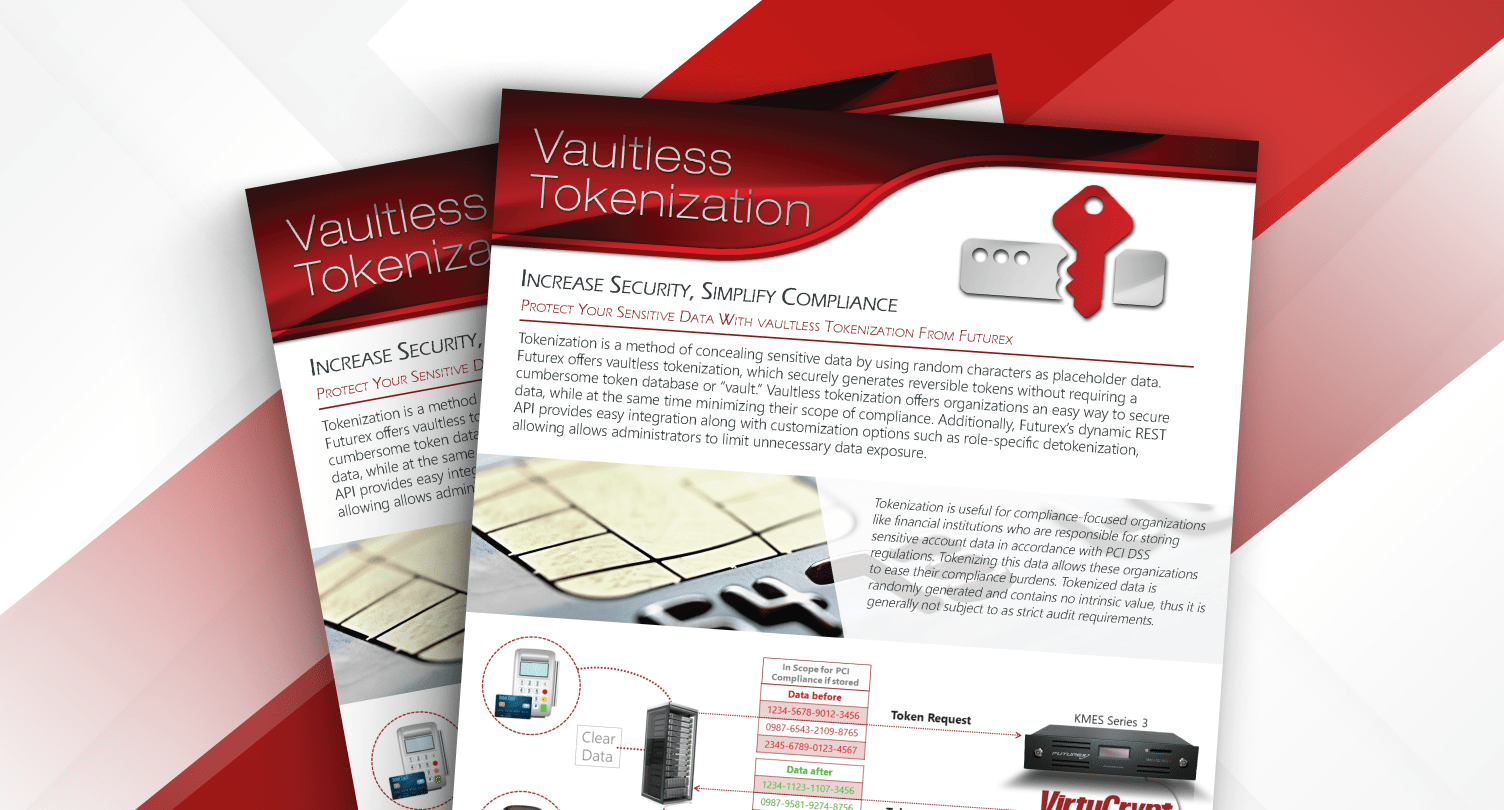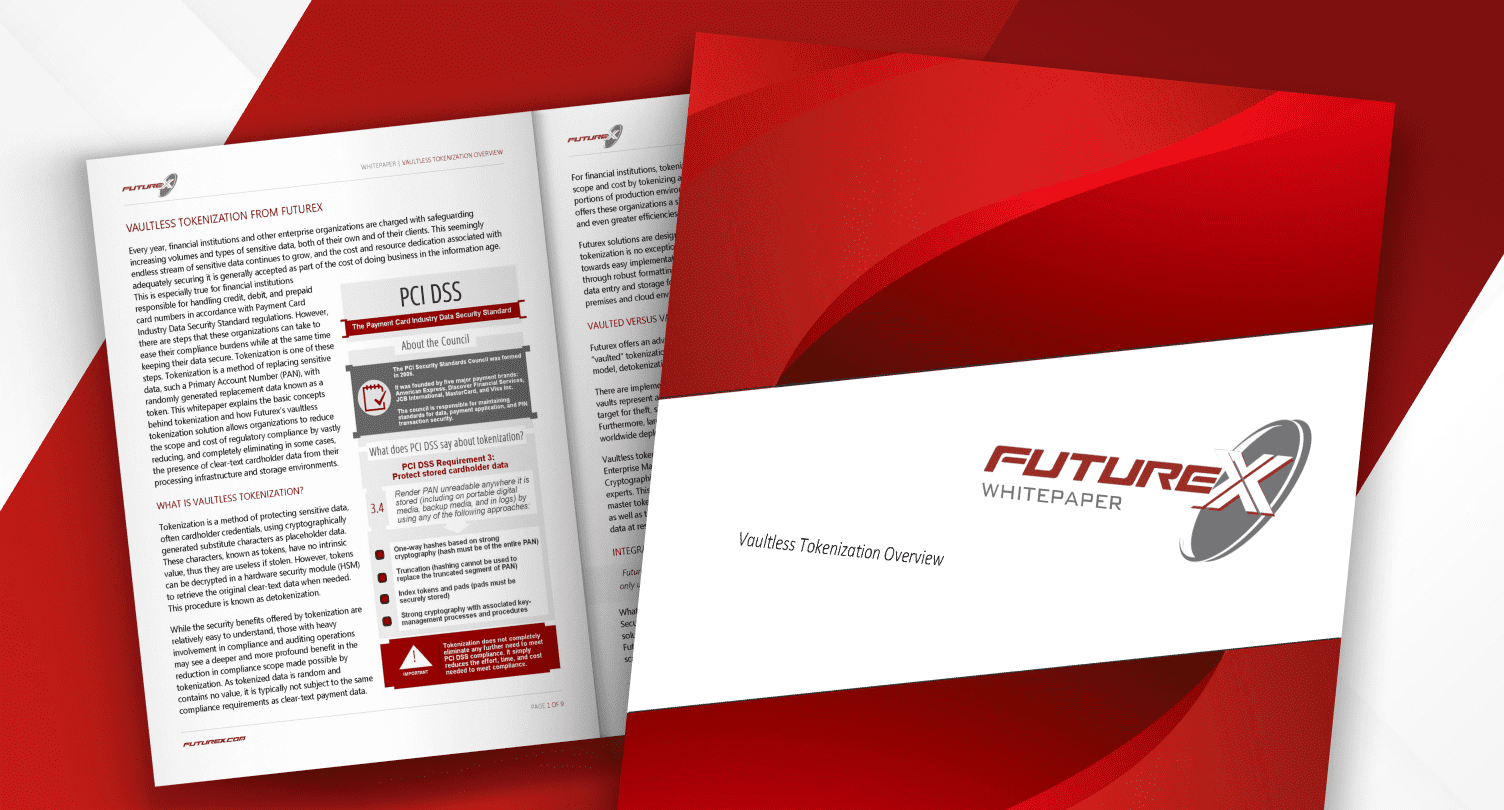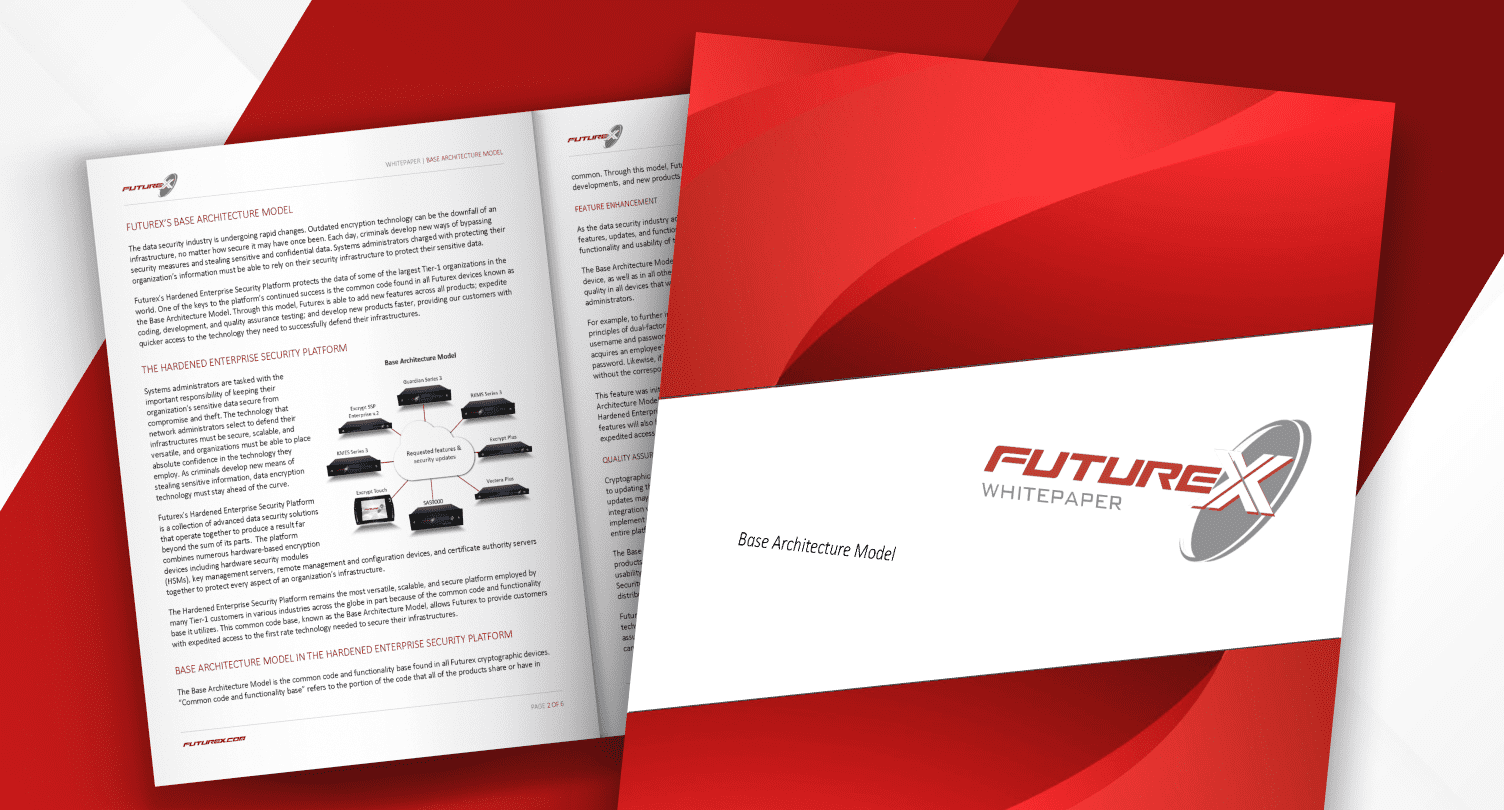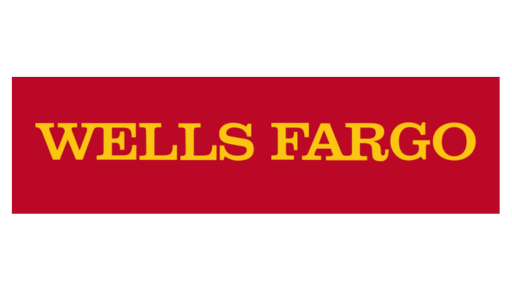Data privacy
Meet regulatory compliance such as GDPR, LGPD, or HIPAA/HITECH with flexible vaultless tokenization and P2PE solutions backed by our award-winning HSMs.
Data protection solutions for enterprise organizations

Futurex devices excel in advanced cryptographic and data management tasks, offering scalability tailored to your organization's size and requirements. Trusted by businesses worldwide, our solutions ensure compliance with data protection regulations like GDPR and PCI DSS. Deployable in the cloud, on-premises, or as a hybrid solution.
Meet regulatory compliance such as GDPR, LGPD, or HIPAA/HITECH with flexible vaultless tokenization and P2PE solutions backed by our award-winning HSMs.
Encrypt data in transit and storage, as well as the key management servers that establish PCI and CA to authenticate end-users. Secure your communications data, from Microsoft to Google.
Applications authenticate users with credentials such as passwords and keys. Futurex's hardware cryptography and key management solutions protect these credentials and integrate with third-party applications to ensure their security.
Tokenization replaces sensitive data with unique tokens, protecting it from unauthorized access. Futurex ensures secure, compliant data handling and reduced breach risks.
Vaultless tokenization removes the need for token vaults, reducing potential attack surfaces and simplifying the data security infrastructure for greater efficiency.
By eliminating the overhead associated with managing token vaults, vaultless tokenization enhances system performance and scalability, making it suitable for high-volume environments.
Vault tokenization is the older method of tokenization. In the vault tokenization model, detokenization requires a database that is queried with a token to retrieve the original data stored within. This requires large databases mapping tokens to their corresponding clear data. These databases are known as token vaults. Retrieving and detokenizing vaulted data takes extra time because of the need to query vault database for the corresponding token. Predictably, this creates latency issues for large databases supporting frequent queries. There are implementation, security, and compliance drawbacks to the vault tokenization model as well. Token vaults represent a single point of failure in tokenization infrastructures. They are a high-risk target for theft since they contain highly sensitive data in the clear. Possessing clear data brings you within the scope of PCI DSS compliance, which could be avoided otherwise. Furthermore, large token vaults often present complex implementation problems, particularly in distributed, worldwide deployments.
Vaultless tokenization allows organizations to easily meet international regulatory compliance obligations. How? By reducing or even eliminating the presence of clear-text cardholder data from their processing infrastructure and storage environments.
Vaultless tokenization eliminates the need for a token vault or vault database. The vaultless tokenization process involves secure cryptographic devices to generate tokens using standards-based algorithms and encryption keys.
In this model, sensitive data remains encrypted throughout the payment process, which potentially eliminates cleartext cardholder data from the merchant network entirely. The process of creating tokens can be fully automated.
For example, with vaultless tokenization, when a card is presented at a Point-of-Sale terminal, the primary account number (PAN) is immediately encrypted using Point-to-Point Encryption (P2PE). When the encrypted PAN is sent from the POS terminal to the secure cryptographic devices on the back-end, it is decrypted within the devices’ secure boundary, tokenized, and then processed through the card issuer using the tokenized data.
Under this model, the combination of POS encryption and vaultless tokenization allows for secure transaction processes and storage of credit card details for future use, without ever placing cardholder data in the clear. Sensitive data stored via vaultless tokenization also does not have to be replicated between data centers, resulting in reduced latency.
The proven success of tokenization has applications across multiple industries and sectors. It can be expected that a wide range of organizations, from healthcare providers to government agencies, will take advantage of the myriad of benefits of using the versatile and powerful vaultless tokenization technology.
There are still some financial corporations that rely on vault tokenization to secure their customers’ sensitive payment information, despite the drawbacks to the method. This is typically due to outdated regional legislation or issues in the wording of encryption laws. For example, local legislation may specify that all financial corporations must use “tokenization done in a vault database” without realizing that they are eliminating those corporations’ ability to use a more secure, vaultless method.
For corporations in these regions that are concerned with the integrity of their tokenization process, it is often possible to get a variance granted in the law, or to petition for an exception. For example, if the company uses tokenization in a FIPS 140-2 Level 3 validated cryptographic module, their local government will often make an exception for them.
/ds_thumbnail_kmes%20s3-min.png)



"Futurex allows us to securely and cost effectively offer the most rigorous protection of our customers’ information.”
- John Stevenson, Vice President of Information Security and Compliance
First American Payment Systems
Futurex provides HSMs and key management servers that handle encryption, bring-your-own-key (BYOK). Futurex helps enterprise organizations deploy a modern cloud data security environment that complies with the latest standards and regulations.

